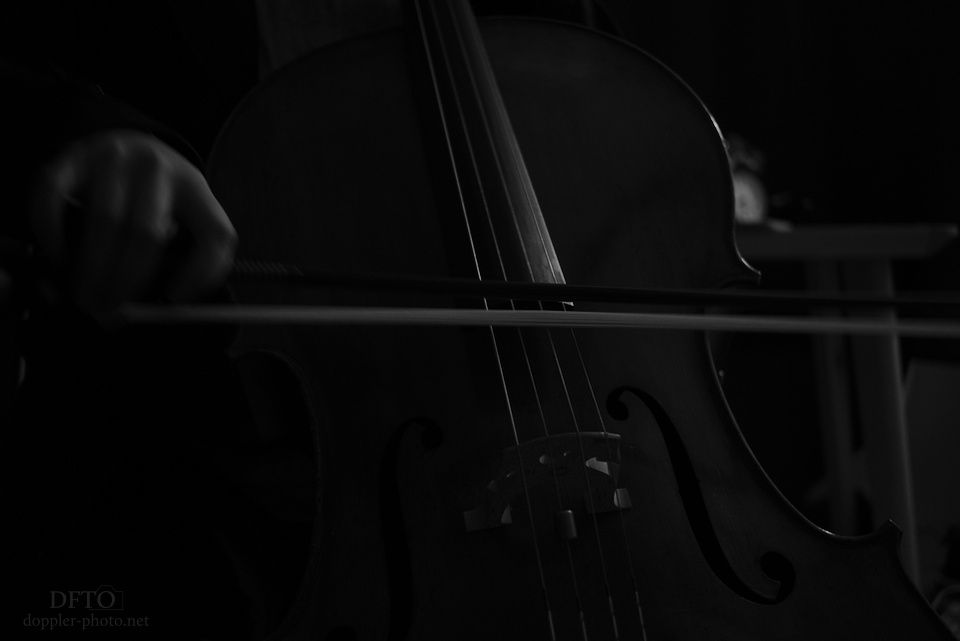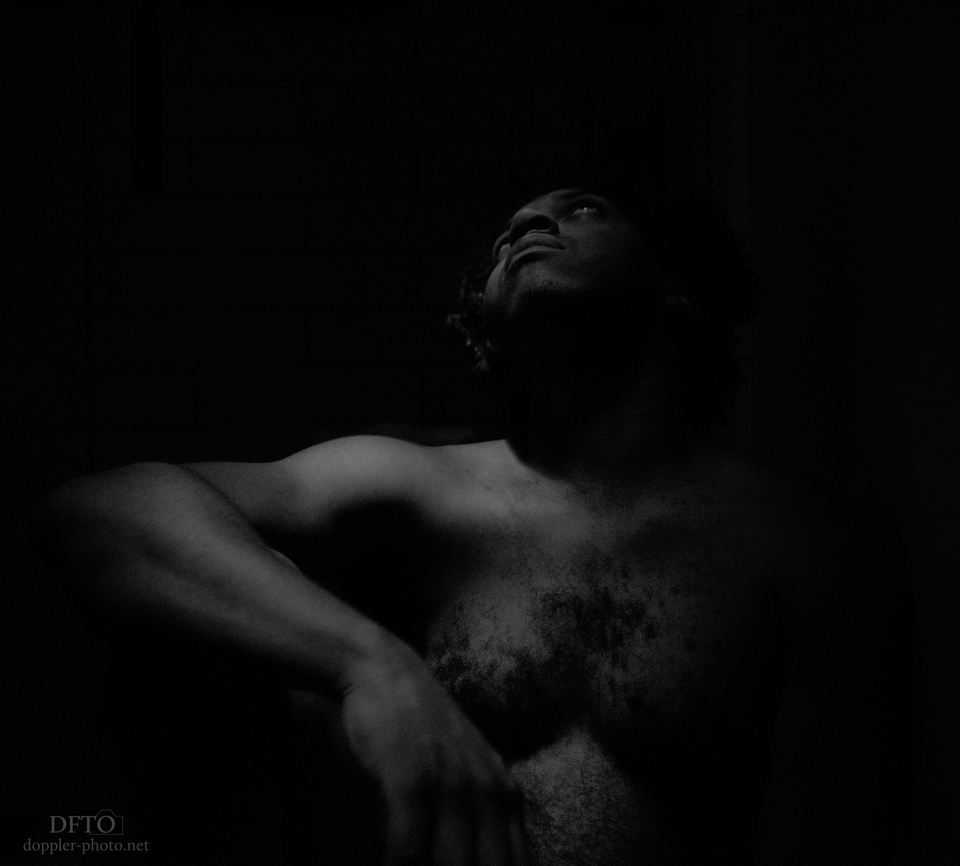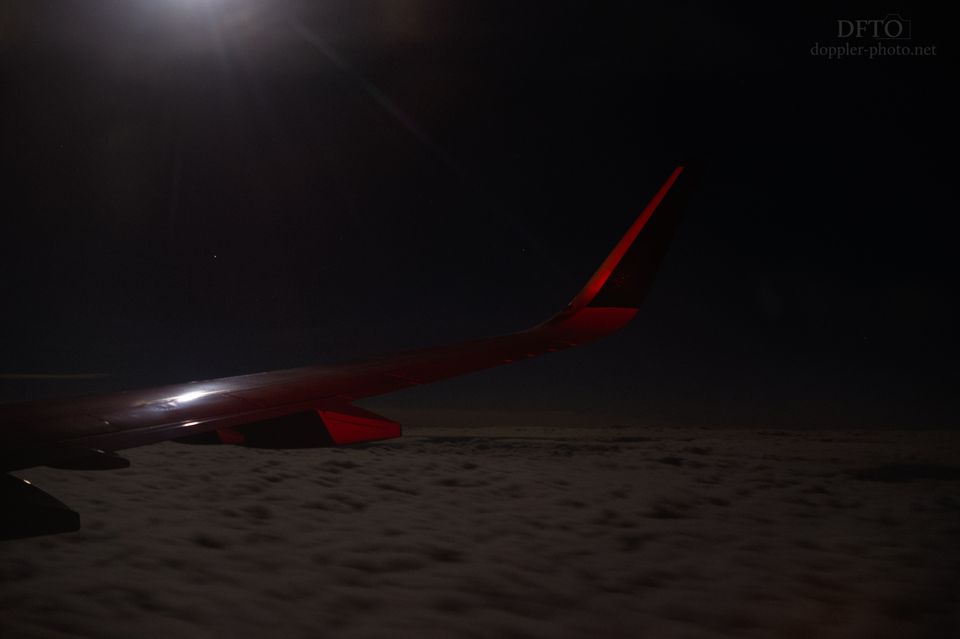
One of my main photographic goals is to tell the story of the motion that happens in the world. I often use a number of common techniques (such as panning), and those typically get me to a pretty reasonable result.
But sometimes, I want to shoot for unreasonable. Sometimes I want to try something that seems almost impossible, just to see if it could work out. Sometimes I want to see not just what motion does look like, but what motion could look like.
The opening image was the result of one such rumination. "How do you take a picture that focuses on the sense of drawing a bow across the strings?" I love what I came up with, but it turns out that the key wasn't to plan, or do lots of math, or to have any kind of a controlled setup. The key was to notice my friend playing her cello, and to just give it a shot. I tried to get the focus where it needed to be, the camera handled the exposure, and I hit the shutter when I felt like the moment was right.
I think one point here is that some experiments are really simple, if you're the right person to run that particular experiment. It often pays to just give something a shot without overcomplicating things.
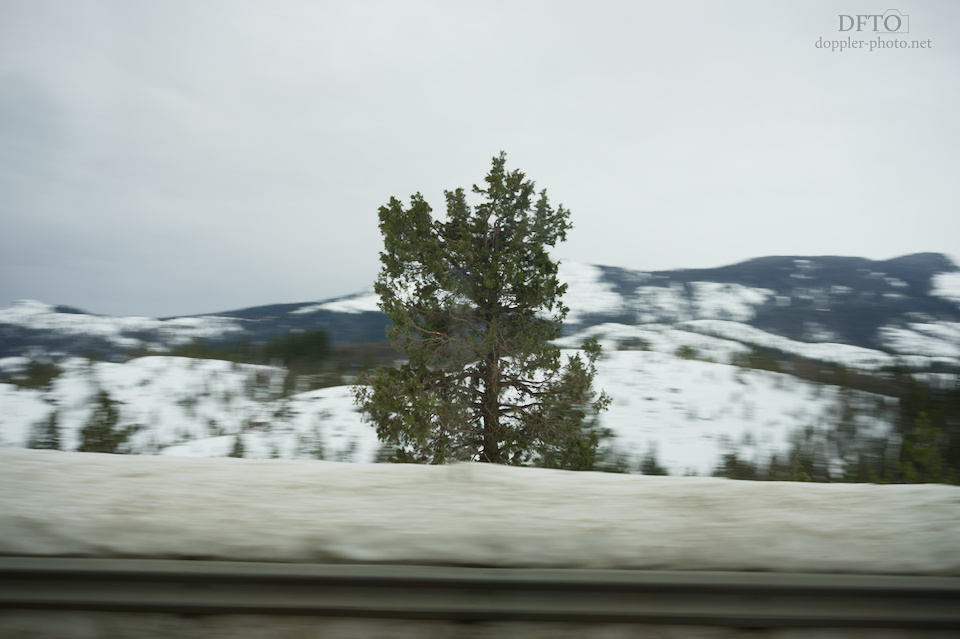
A lot of my recent experimentation has centered on how to show motion in cases where I'm on (or in) some kind of moving vehicle. I've been practicing a technique that I've just called reverse-panning. Technique-wise, it's exactly the same as normal panning — you point your camera at the object you want to appear stationary in the final image, and you keep it pointed there while you take the picture.
The result looks completely different though, and I think there are two reasons for that: one visual, and the other semantic. Normal panning produces a characteristic appearance where the static objects farthest away from the camera seem the blurriest, and the static objects closest to the camera seem the least blurry. That's because as you rotate the camera through a certain angle, the farther away you look, the more linear distance is covered by that angle. You could imagine that the center of the frame travels at 1 mph very close to the camera, and (say) 70 mph far away from the camera.
With reverse panning, though, it's kind of the opposite, but not exactly. The things that are right in front of the camera seem very blurry, because they're the ones moving past at 70 mph. And that apparent relative speed drops all the way down to zero at the target subject, and then speeds up again into the distance. And so it gives the subject a sense of isolation that can be more extreme than with panning. You'll note, for instance, that the snowbank and guard rail are very blurry in this picture, which is uncharacteristic of a normal panned image.
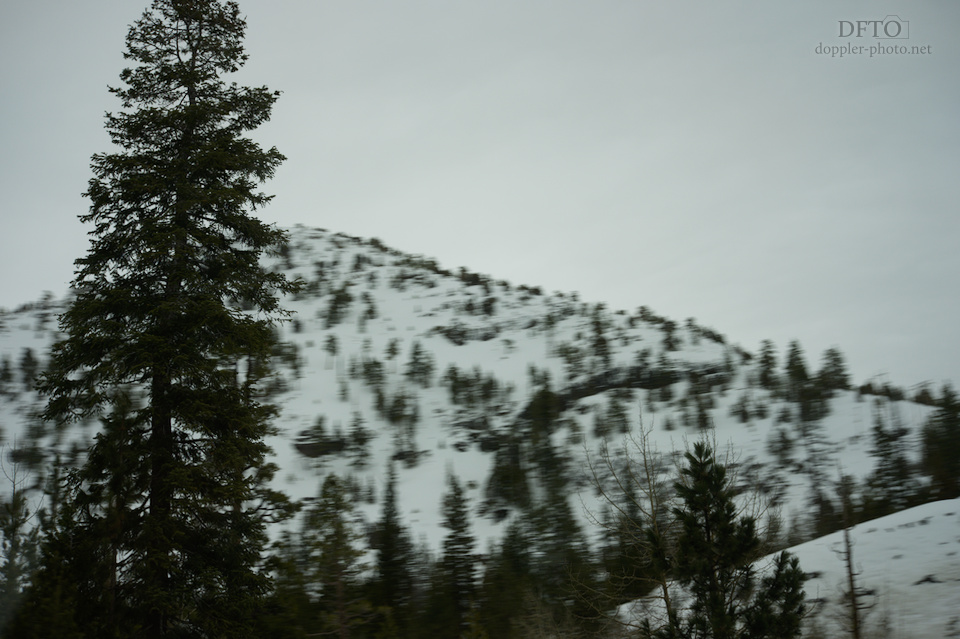
And I'd imagine that another part of that difference isn't in the image itself, but rather, in our understanding of it. We know that trees don't move at 70 mph, and so when we see the juxtaposition of a stationary tree against a bunch of trees that our brains know are also stationary, but that clearly show hints of being in motion, our brains see the image differently as well.
By contrast, in a normal pan, the image clearly juxtaposes something in motion against something that is stationary.
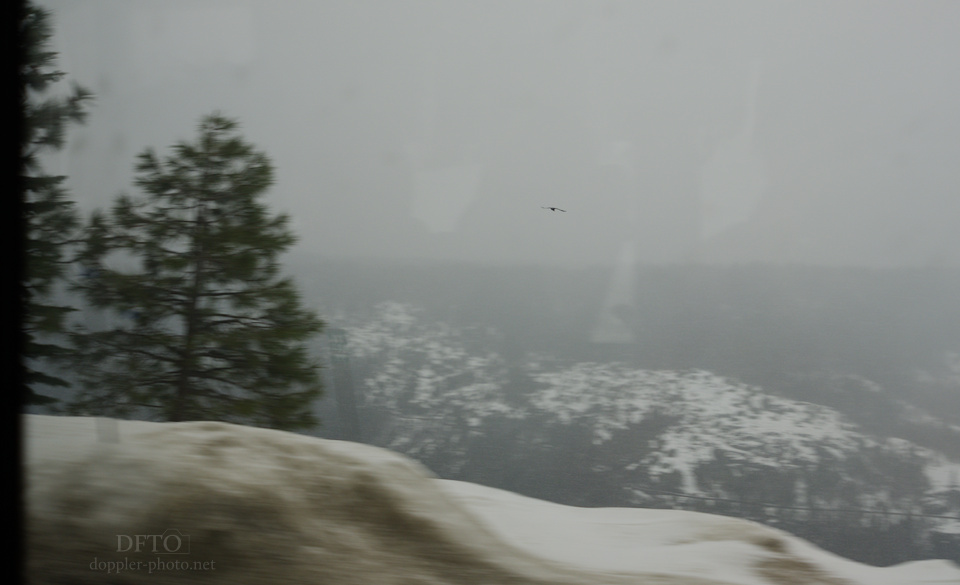
Of course, since what you do is identical to panning, this technique also works when everything in the scene is moving relative to each other. Here, the bird is flying, and so it has velocity relative to the ground. I shot the image from a bus that also has velocity relative to the ground, as well as velocity relative to the bird. The end result is that the bird is completely isolated in the frame at a much faster shutter speed (and more-closed aperture) than would be effective for a traditional panned shot of a distant bird — 1/100s and f/4 in this case.
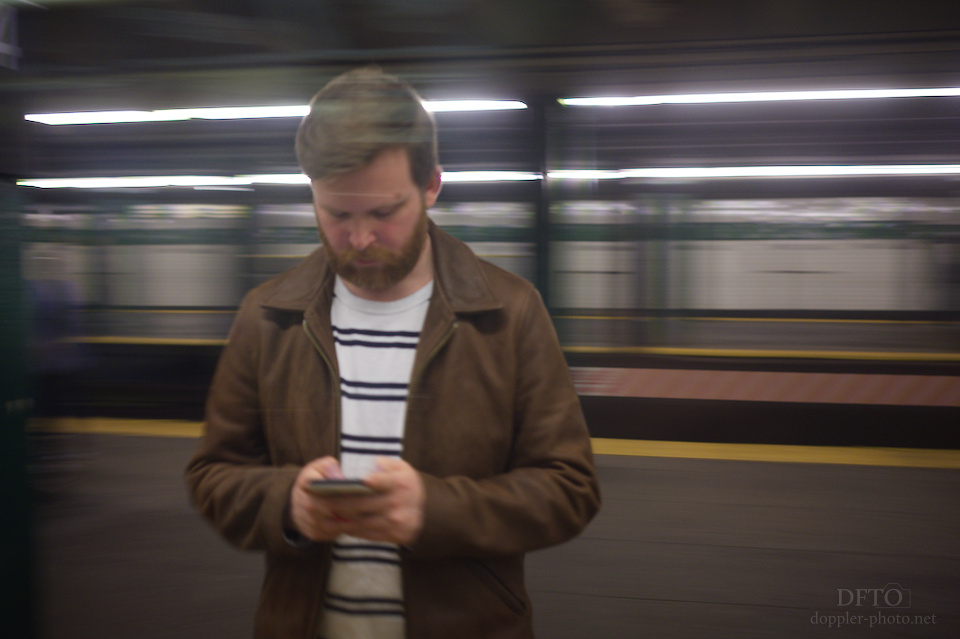
I've also taken this experiment beneath the streets of New York City. During one ride on the subway, I positioned myself in front of a door window and took this shot of a man standing on the platform. The focus is way off — another detail that I'll need to practice as I continue to explore this technique — but the man is again isolated in the frame in a way that seems super interesting. Even more interesting is that his hands show some motion blur, even though his face and torso don't. I'm excited to see how this continues to develop.

This shot was just an ordinary pan, but with a longer shutter speed (1/10s). That said, the general darkness of the scene, combined with the bright lights providing something of a ground reference, helped to convey a much stronger sense of motion than I was expecting from this shot.
I've been doing a lot of experimentation with super long shutter durations (10–15s) during overnight flights, but I haven't put a lot of time into exploring what can be done in the range right around 1/5s or 1/10s. As before, this particular shot has a lot of room for improvement, but these experiments will definitely continue as well.
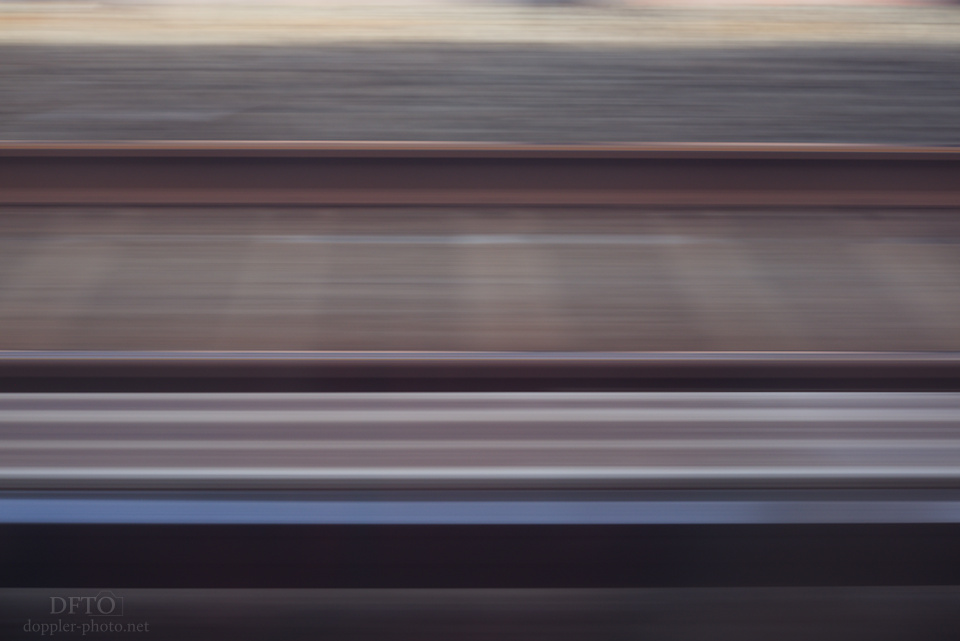
Another train ride, another experiment. This time, the game was to mask the presence of motion, while still embracing it. Just like everything else so far, this is basically a variation on panning. But the train itself was doing the panning for me. And the purely linear motion allows you to do longer exposures (1/30s in this case) while maintaining crisp edges at different distances from the camera.
That combination causes one of the major characteristics of this image — that the horizontal edges are extremely clear, and the vertical edges are incredibly subtle. Yet again, this is a situation where using an intermediate shutter duration causes an interesting image that would suffer somewhat from too short or too long of an exposure.
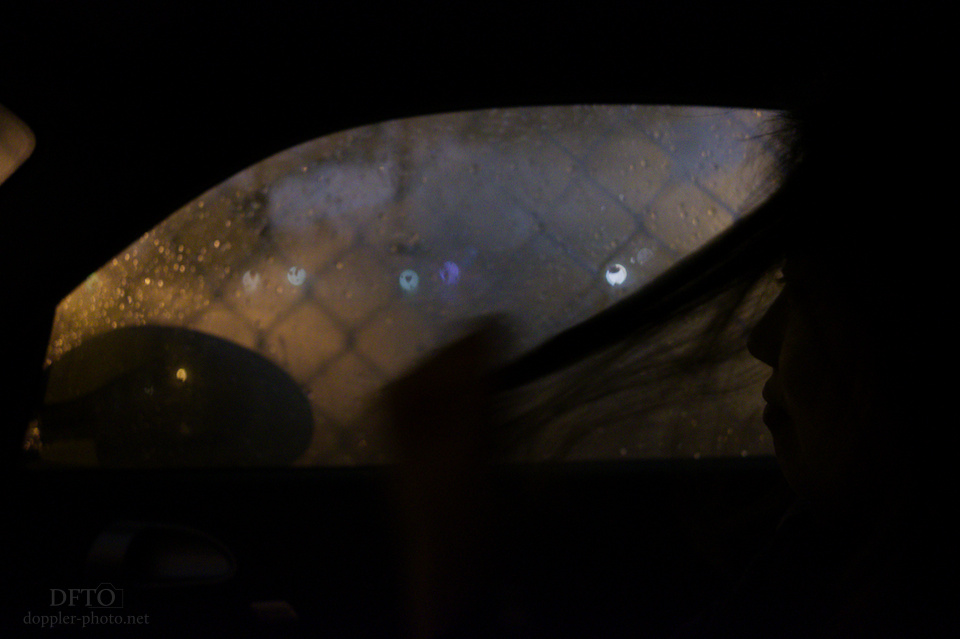
And finally one more vehicle shot, but this time at rest. A friend was telling me about some frustration in their life one evening, and as they spoke, I noticed them absent-mindedly pulling on their hair every now and again. I wanted to capture that movement, but I wasn't sure how to get the hand in motion and the head still. So instead of putting too much thought into it, I just chose the settings that would show the motion, took photos when I saw the hand move, and hoped for luck on everything else. Worked a charm.
Sometimes the key to making an unlikely photo is just to try. And even if you try and it doesn't turn out how you wanted, it gives you some insight into what to change the next time around.

